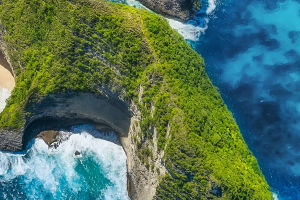Tidal flats are a unique and dynamic ecosystem that serves as a transition zone between the land and sea. They possess characteristics of both marine and terrestrial environments and are influenced by both land and sea.
These areas are made up of soil, water, and a variety of plants and animals that all contribute to the overall health and well-being of the ecosystem.
The tidal flat is a dynamic part of the earth's ecosystem and is constantly shaped by the ebb and flow of the tide. The ocean currents bring nutrients and organic matter to the tidal flat, where they gather and deposit over time.
These nutrients are difficult to access for higher-level species, but a wide variety of benthic organisms play a crucial role in circulating these resources.
For example, when the tide recedes, small crabs can be seen emerging from the mud. At first glance, they may not seem to be doing much, but upon closer examination, it can be seen that they are filtering the mud for organic matter such as algae and plankton.
This seemingly small action is essential for the accumulation of nutrients in the mud, which can then be utilized for growth and development. These small crabs are then preyed upon by larger predators, such as birds, transferring nutrients to higher levels of the food chain.
Additionally, beach crabs that live in the mud play an important role in the beach ecosystem. Their burrowing behavior helps to aerate the soil, allowing for fresh air and water to reach the roots of plants like mangroves, which grow on the beach. Common species of beach crabs include the arcuate fiddler crab, short-bodied big-eyed crab, newly bloated crab, short-fingered monk crab, and Taiwanese mud crab.
Tidal flat soil can also be utilized for agricultural purposes. By understanding the dynamic changes of salinity and alkalinity in the soil, people have developed ways to make use of tidal flat saline-alkali land for planting. One approach is to reduce the salinity of the soil through desalination by planting halophytes such as Suaeda salsa or through methods such as freshwater washing or hidden pipe salt discharge.
Another approach is to increase the salt tolerance of plants through genetic engineering. With the rapid advancement of molecular biology in the 1990s, genetic engineering has been used to enhance the salt tolerance of plants, leading to the successful application of domesticated Salicornia mandshurica in marine agriculture.
In conclusion, the tidal flat is a vital and dynamic part of the earth's ecosystem, playing an important role in the circulation of nutrients and supporting a wide variety of species. Understanding the value of the beach is crucial for maintaining and preserving this valuable resource for future generations.


